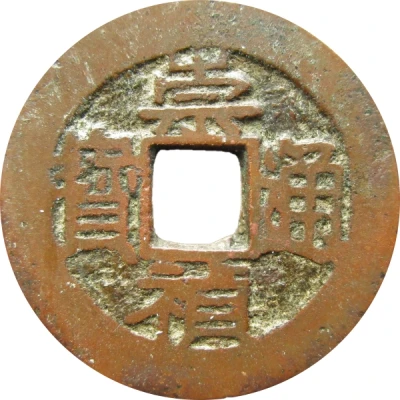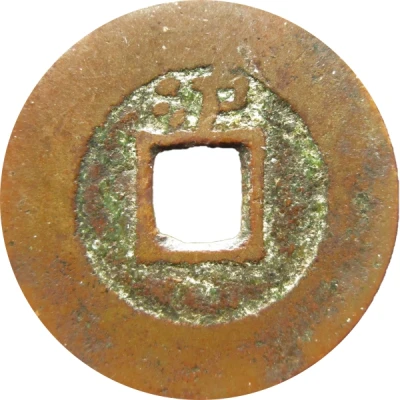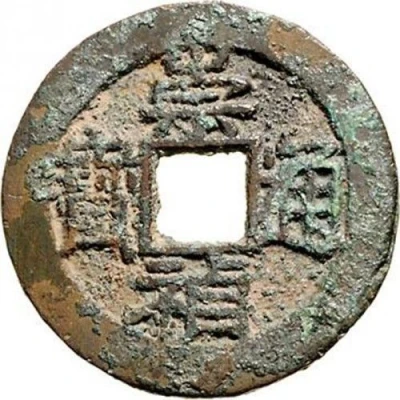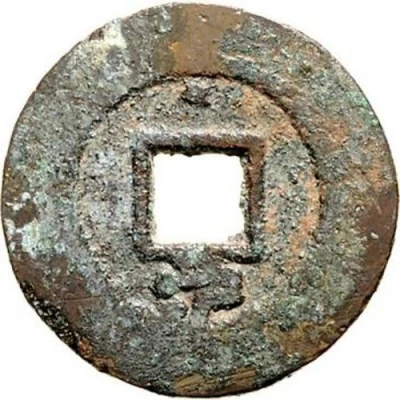


© Ollisaarinen (CC BY)
1 Cash - Chongzhen Tongbao; northern type; Lu ND
| Brass | - | 24 mm |
| Issuer | Empire of China |
|---|---|
| Emperor | Ming dynasty › Chongzhen (崇祯帝) (1627-1644) |
| Type | Standard circulation coin |
| Years | 1630-1644 |
| Value | 1 Cash |
| Currency | Cash (621-1912) |
| Composition | Brass |
| Diameter | 24 mm |
| Shape | Round with a square hole |
| Technique | Cast |
| Orientation | Medal alignment ↑↑ |
| Demonetized | Yes |
| Updated | 2024-10-04 |
| Numista | N#222608 |
|---|---|
| Rarity index | 94% |
Reverse
One Chinese ideogram at various locations.
Script: Chinese (traditional, regular script)
Lettering: 泸
Translation:
Lu
Luzhou (mint)
Edge
Plain
Comment
Hartill suggests the larger, heavier coins (around 26 millimetres and weighing 1.3 Qian) were the first 1 Cash pieces produced. By 1630, coins minted in the north weighted 1.0 Qian and coins minted in the south weighed 8 Fen or less.The Northern types and the Southern types are differenciated by the left part of Zhen.
- Northern types: 礻
- Southern types: 示
Interesting fact
The Chongzhen Tongbao coin was the first coinage issued by the Ming dynasty, which was established in 1368 and lasted until 1644. The coin was introduced in 1630, during the reign of Emperor Chongzhen, and it was made of brass. The use of brass for coinage was a significant change from the traditional use of copper, and it was a response to the growing demand for a more durable and reliable currency. The Chongzhen Tongbao coin was also notable for its unique design, which featured a square hole in the center and a rounded border. This design was meant to prevent counterfeiting and to make the coin more easily identifiable. Overall, the Chongzhen Tongbao coin was an important innovation in Chinese currency and played a significant role in the country's economic development during the Ming dynasty.

